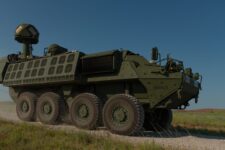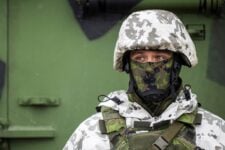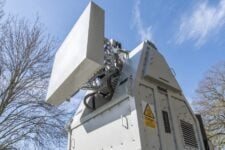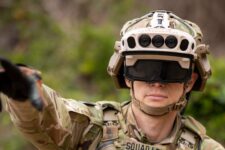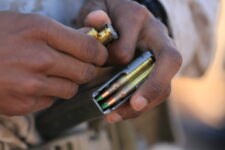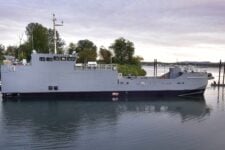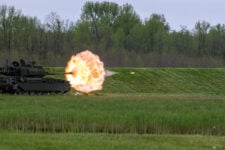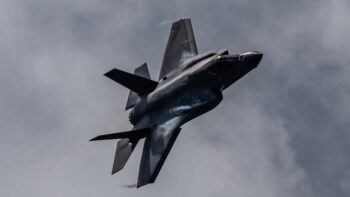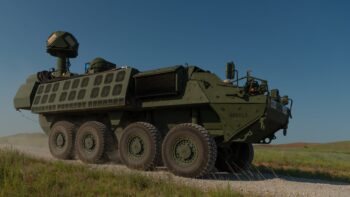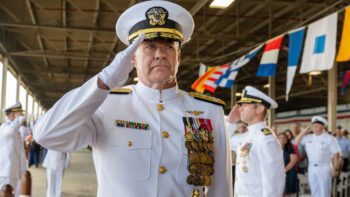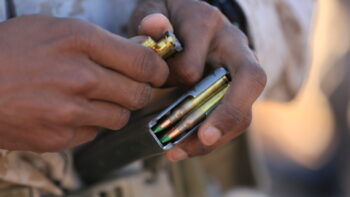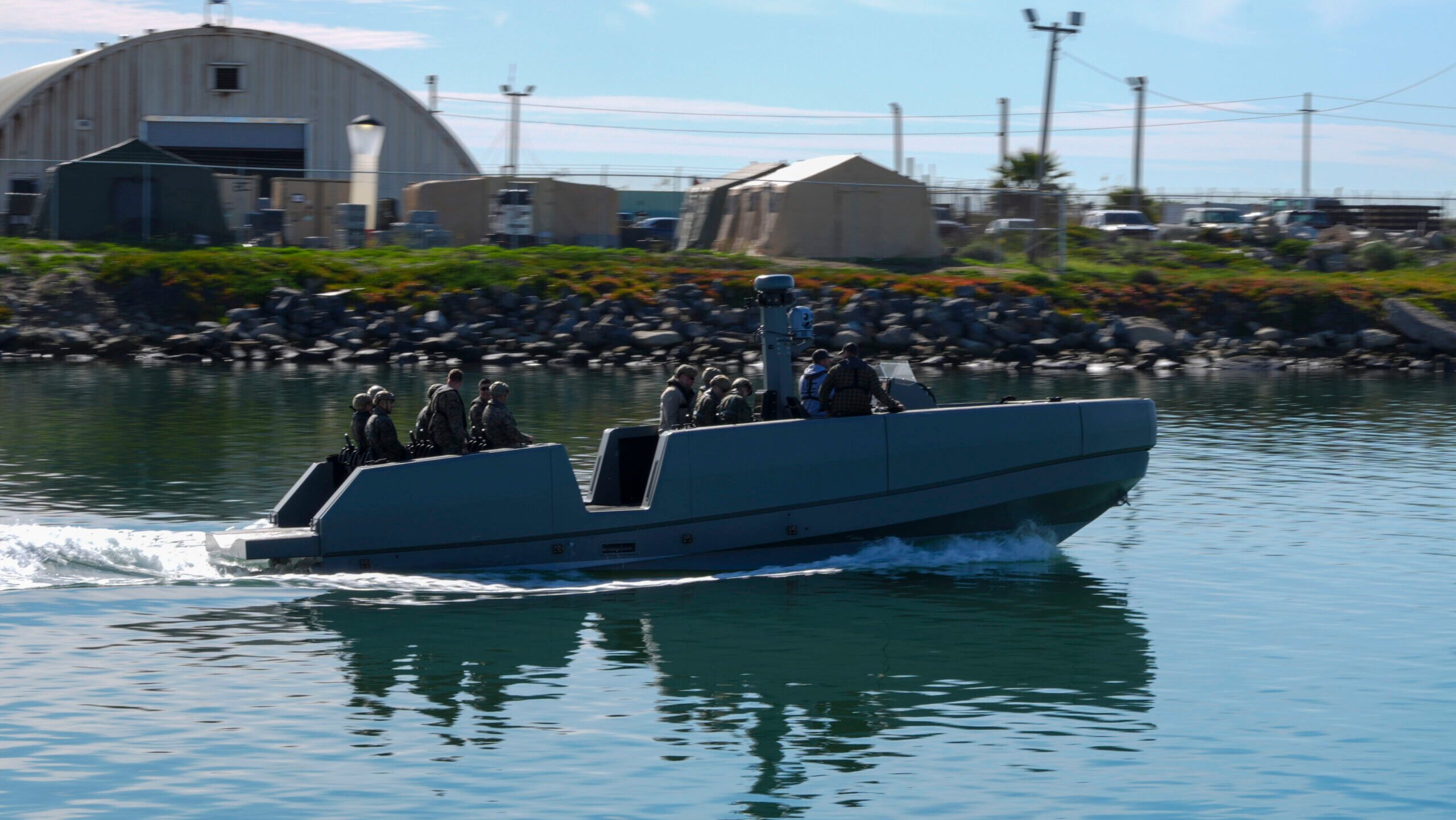
A Multi-Mission Reconnaissance Craft sails out of the Del Mar Boat Basin in order to test its capabilities as part of Project Convergence Capstone Four, Feb. 23, 2024 at Camp Pendleton, CA. (U.S. Marine Corps photo by Kevin Ray J. Salvador)
MODERN DAY MARINE 2024 — As the Marine Corps reemphasizes island-hopping operations in the western Pacific, it needs a new kind of reconnaissance force, one equally adept on water as on land. As part of that pivot, Marines from the West Coast-based 1st Light Armored Reconnaissance Company — which, as the name implies, typically scouts ahead on land in six-wheel-drive Light Armored Vehicles — will test out four new Multi-Mission Reconnaissance Craft in a series of on-the-water experiments scheduled to run through 2025.
The first two Australian-made MMRCs were delivered in February and another two are on the way, said Maj. Patrick O’Mara, who oversees the experiment for the field testing branch at the Marine Corps Warfighting Laboratory (MCWL).
“The really big focus right now is getting the Marines comfortable on the new platform, comfortable with new systems, so they can buy down that risk and we can go out into deeper water and do more complex experimentation,” he told the Modern Day Marine conference in downtown Washington, DC, on Tuesday.
Until now, O’Mara explained, if armored recon Marines needed to operate on water, they used Rigid Hull Inflatable Boats (RHIBs). The new MMRC’s hull, by contrast, is made of lightweight carbon-fiber composites, specifically designed not only to reduce shock as it races through rough waters — a major source of injury to operators and damage to equipment — but also to accommodate all sorts of electronics, with its own built-in generator and modular mounting rails to plug-and-play different manufacturers’ tech. So while the MMRC and RHIB are roughly the same size (11.9 meters versus 11), the MMRC can load up with much more sensor and communications gear.
That makes MMRC a waterborne reconnaissance platform in its own right, instead of mainly a transport for scouts who then proceed ashore on foot.
“This is a primary sensing craft [that] is going to help us support the targeting cycle,” O’Mara said, “plucking that raw data and disseminating that to the joint, combined force.” That means the information will go not just to other Marine Corps elements but to other US services (“joint”) and even foreign allies (“combined”). In fact, at least one MMRC already participated in the Army-led all-service Project Convergence wargames back in February, alongside several other Warfighting Lab experiments involved in PC24.
The MMRC’s exact sensor and communications loadout can be customized to the mission, swapping systems in and out as needed, so figuring out the best array of options for different tasks is going to be a big part of the upcoming experiments. The current baseline kit includes a Teledyne SeaFLIR 240 infrared sensor, a Furono maritime navigation radar, and Hoverfly Spectre 2.0 quadcopter tethered to the craft by its power and control cable.
“That menu of sensors gives you the ability to detect, classify and track vessels of interest,” O’Mara said.
The MMRC can also carry at least some of the sensors and communications gear the Marines use on land. (In fact, back in 2021, an MMRC integrated an Aries Defense sensor suite originally used by Marines ashore in Afghanistan.)
“We’re … taking advantage of a lot of the solutions and the work we’ve done to tie in disparate units on the ground, the same methodology, the same equipment can be applied in this realm,” O’Mara said. “The only unique issue,” he said, is exposure to salt water, which is notoriously corrosive to equipment, but otherwise “most of the technology is pretty applicable across multiple domains.”
In addition to aerial drones, the Marines are also experimenting with launching smaller watercraft from the back of the MMRC, both manned inflatable boats such as the new E-CRRC [PDF] and unmanned surface vessels.
RELATED: ‘One pane’: Navy seeks standardized C2, data-sharing for unmanned systems
“We want to test out manned-unmanned teaming techniques where we take uncrewed systems and extend the reach of the MMRC,” O’Mara said. “It’s all about protecting the operators, not putting them on the forward edge.”
“Protecting the operators” was very much of the mind of the MMRC’s manufacturer, the Australia-based Whiskey Project, founded in 2019 by a recently retired Royal Australian Navy diver who’d gotten sick of seeing his comrades injured on the water.
“I spent 25 years in the Navy as a frogman,” said Darren Schuback, speaking to Breaking Defense after O’Mara’s presentation. “Working special operations, I was exposed to a lot of issues associated with small craft throughout my career. I witnessed a number of my colleagues have career-ending injuries as well, [plus] the long-term injuries associated with maritime operators, around their knees, lower back and joints, etc. … It’s from the shock when you’re pounding into the waves.”
Even if operators aren’t injured immediately, he said, hours of jolting through the water can leave them exhausted, disoriented, and less capable of performing their high-stakes mission. Delicate sensors don’t do well, either.
“So we started by trying to create a whole form that would reduce the shock,” Schuback said, ultimately by 40 percent. The next step was to build in the system of modular rails to support a wide variety of electronic equipment, since the company aims to offer the boat to a range of countries for a host of missions.
Besides the US Marine Corps experiments, Schuback told Breaking Defense, he also has a developmental contract from the Australian Defence Force. It’s one more small way in which the US and Australia are trying to work together to secure the vast Pacific.
